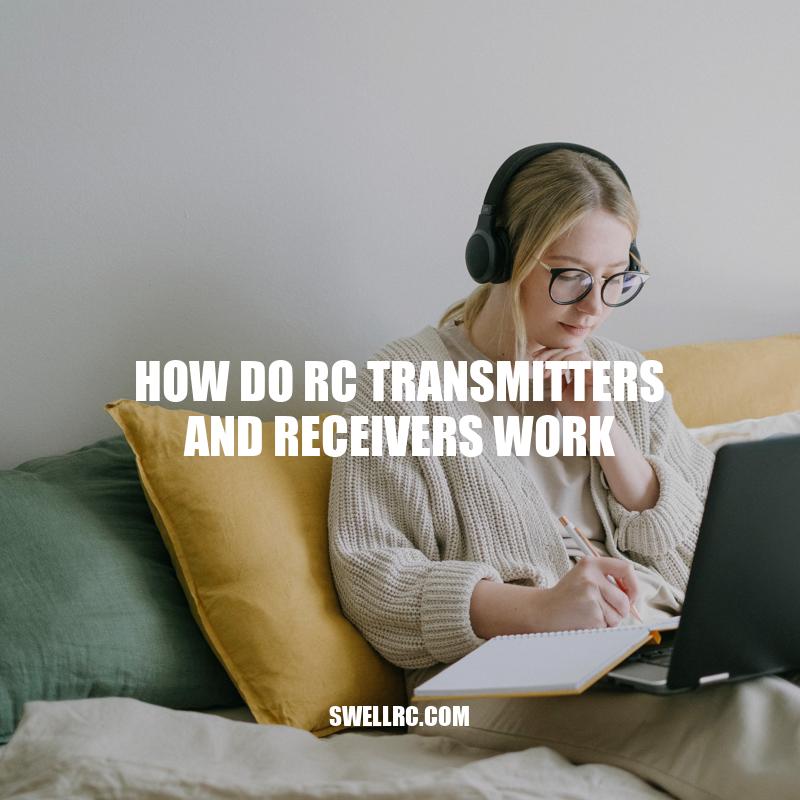How RC Transmitters and Receivers Work: A Complete Guide
RC (radio controlled) models like cars, airplanes and boats have been popular with hobbyists for many years. These models offer hobbyists the opportunity to explore their craft and passions through radio-controlled technology. At the heart of every RC model is a transmitter and receiver system that allows them to function remotely. The RC transmitter sends signals to the RC receiver, which controls the model’s movement. Without this system, modern RC models would not have the degree of control that hobbyists demand. RC devices operate on radio frequencies and this sophisticated technology has advanced, allowing for more precise control and innovative features. As such, it’s important for hobbyists to fully understand how the RC transmitter and receiver work if they want to maximize their enjoyment and safety while operating remote-controlled models.
Parts of RC Transmitter
– Antenna
– Voltage regulator
– CPU
– Control Sticks
The RC transmitter consists of several key parts, including the antenna, voltage regulator, CPU, and control sticks. The antenna allows the transmitter to send and receive signals from the model. The voltage regulator ensures that the transmitter operates within the correct range of power. The CPU controls the signals that are sent to the model, while the control sticks allow for precision adjustments in the model’s movement. Some RC transmitters come with added features like digital displays or customizable buttons that can improve the user’s experience. Websites like RCplanet.com or Towerhobbies.com offer an extensive selection of RC transmitters and receivers, allowing for hobbyists to find a device that suits their preferences and budget.
What are the parts of transmitter?
Some of the basic parts of a transmitter are:
- Antenna
- Frequency Generator
- Power Supply
- Modulator
- Transistor
- Microphone
These parts work together to send signals from one place to another. If you are interested in learning more about transmitters and their parts or want to purchase transmitters, you can refer to websites that specialize in electronics or communication equipment.
Types of RC Receivers
RC receivers come in various types to suit different models and user preferences. The most common types of RC receivers include single channel, 4-channel, 6-channel and programmable receivers. Single-channel receivers are designed to receive input from a single control channel and are commonly used in simple toy models. 4-channel receivers can receive up to four input channels and is commonly used in quadcopters and aerial drones. 6-channel receivers can receive up to six input channels and is designed for boats, cars and airplanes. Programmable receivers allow users to customize the input channels and adjust the sensitivity of the receiver for a more customized experience. Websites like Horizonhobby.com or Amazon.com offer a wide range of RC receivers with various features, allowing hobbyists to find a receiver that suits their needs.
What are the different types of RC radios?
There are several types of RC radios available in the market. Some of the most common ones include:
- Entry-Level RC Radios
- Intermediate-Level RC Radios
- Advanced RC Radios
- Computerized RC Radios
- Multi-Channel RC Radios
Each type has its unique features and advantages. You can choose the one that suits your needs and budget. If you are looking for high-quality RC radios, you can check out websites like Amazon, HobbyKing, and Tower Hobbies.
Advancements in RC technology
- Introduction of 2.4 GHz frequency
- Longer range of control
- More accurate controls
- Reduced interference from other devices
The RC world is in a constant state of evolution, with advancements in technology leading to better and more accurate controls, longer ranges of control, and reduced interference from other devices. One of the most significant advancements in RC technology was the introduction of the 2.4 GHz frequency. This frequency offers a considerable improvement in range, accuracy and interference-free operation, especially in crowded areas where many different devices are using the same frequency spectrum. Another recent advancement in RC technology is the introduction of telemetry systems that allow users to monitor their RC models’ status, battery life and other vital information in real-time. These technological advancements have led to more sophisticated RC models and better user experiences. Websites like Rcplanet.com and Hobbyking.com offer a wide range of RC models with advanced technology for hobbyists to choose from.
What is the technology of RC cars?
RC cars or remote control cars work using the following technology:
- Radio transmitter: This is the controller that sends signals to the receiver in the car.
- Receiver: This receives the signals from the transmitter and sends them to the car’s electric motor and steering system.
- Electric motor: This is what powers the car and makes it move.
- Battery: A rechargeable lithium-ion battery is used to power the car.
- Servo: This is what controls the steering of the car.
- ESC (Electronic Speed Controller): This controls the speed and acceleration of the car.
If you’re interested in purchasing an RC car or learning more about the technology behind them, you can check out websites like amazon.com or hobbytron.com.
RC transmitter and receiver safety precautions
While using RC transmitters and receivers, safety should be the top priority to avoid accidents or damage to the equipment. Here are some basic safety precautions to follow:
1. Keep a safe distance
Make sure you are in a safe distance from the RC model while operating the transmitter.
2. Familiarize yourself with the equipment
Read the manufacturer’s instructions and know your equipment. Know the limitations of your model and always use spare parts that are recommended by the manufacturer.
3. Check batteries
Make sure to use fresh batteries and do not mix old and new batteries. Always carry some extra batteries with you.
4. Turn off the equipment
Never attempt to use the RC transmitter and receiver without turning off first. The same goes for the remote controller.
Conclusion
RC transmitters and receivers are essential components for RC models, responsible for enabling wireless control. Following safety precautions and understanding how to use them will ensure better user experience and safety. Before using RC models, it is vital to read the manufacturer’s instructions carefully and follow safety guidelines. When purchasing RC models, make sure to buy from trustworthy sources to ensure safety and avoid purchasing illegal equipment. By following safety guidelines, users can enjoy their RC models without fear of accidents or damage.



